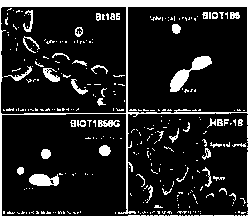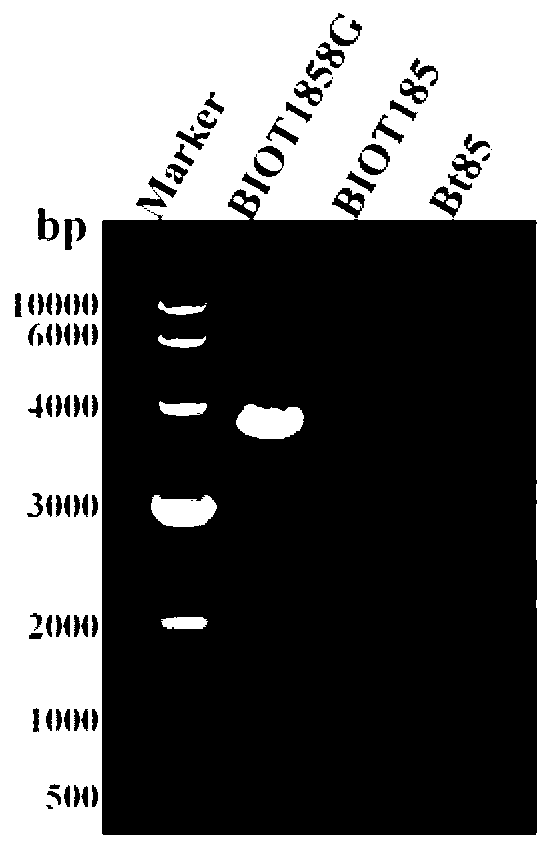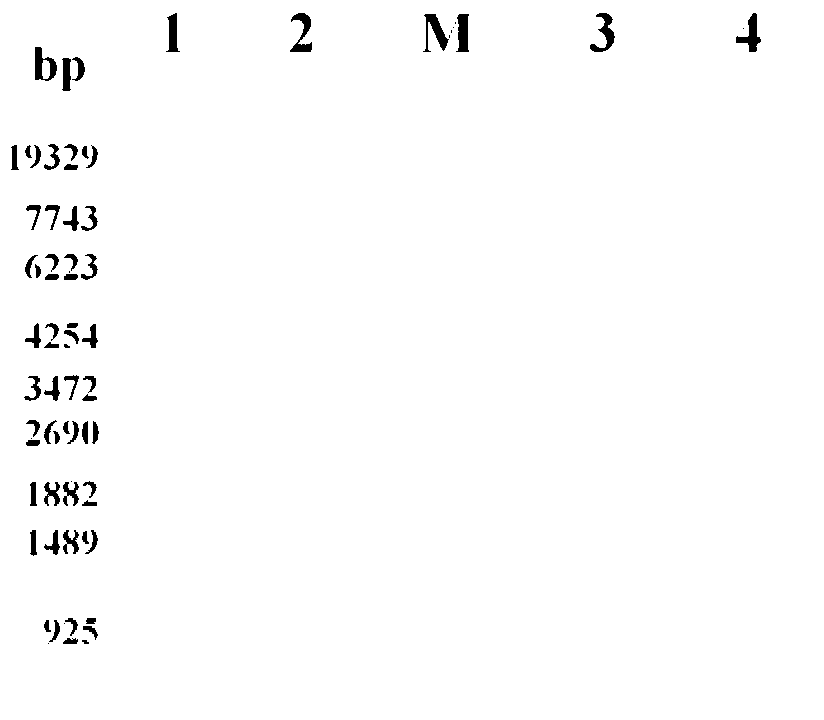Bacillus thuringiensis engineering bacteria and application thereof
The technology of Bacillus thuringiensis and Bacillus aureus is applied in the field of Bacillus thuringiensis engineering bacteria, which can solve the problems of mixed hair of grubs, affecting the quality of peanut grains, and reducing yield.
- Summary
- Abstract
- Description
- Claims
- Application Information
AI Technical Summary
Problems solved by technology
Method used
Image
Examples
preparation example Construction
[0027] 2. Preparation of electroshock-competent Escherichia coli
[0028] In order to improve the transformation efficiency of Escherichia coli SCS110, prepare electric shock transformation competent cells of SCS110 (Sambrook J, Fritsch, EF, and Maniatis T.1989. Molecular cloning: A Laboratory Manual (Cold Spring Harbor Lab., Cold Spring Harbor, NY) , SCS110 recipient cells were transformed by electric shock transformation to remove the effect of methylation in the exogenous gene and obtain more transformants containing the exogenous gene.
[0029] 3. Preparation of Bt electric shock competent
[0030] In order to improve the conversion efficiency of Bt, prepare Bt electric shock transformation competent cells (Sambrook J, Fritsch E F, and Maniatis T, 1989. Molecular cloning: A Laboratory Manual (Cold Spring Harbor Lab, Cold Spring Harbor, NY), using electric shock transformation The method of transforming Bt recipient bacterial cells to obtain more transformants containing ...
Embodiment 1
[0041] Example 1 Preparation of Escherichia coli SCS110 Electrocompetent
[0042] Pick a single colony and culture overnight at 37°C with shaking in 5ml LB. Inoculate in 100ml LB liquid medium according to 1% inoculum amount, culture at 37°C, 230rpm for 2hrs (OD 600 =0.5). Centrifuge at 4000rpm for 6min at 4°C. Discard the supernatant and rinse with pre-cooled ultrapure water twice. Add pre-cooled ultrapure water to suspend the cells. Centrifuge at 9000 rpm for 6 minutes at 4°C to recover the cells. Add pre-cooled ultrapure water to wash twice, add 1-2ml of 10% glycerol to resuspend the cells, aliquot, and store at -70°C for later use.
Embodiment 2
[0043] Example 2 Preparation of Bt Electric Shock Competent
[0044] Pick a single colony and culture overnight at 30°C with shaking in 5ml LB. Inoculate in 100ml BH liquid medium according to 1% inoculum amount, culture at 37°C, 230rpm for 3-4hr (OD 600 =2.0). Centrifuge at 9000 rpm for 6 min at 4°C. Discard the supernatant and add pre-cooled ultrapure water to wash twice. Add pre-cooled ultrapure water to suspend the cells, centrifuge at 9000 rpm for 6 min at 4°C, and recover the cells. Add pre-cooled ultrapure water to wash twice, add 40% PEG to resuspend cells, aliquot, and store at -70°C for later use.
PUM
| Property | Measurement | Unit |
|---|---|---|
| molecular weight | aaaaa | aaaaa |
Abstract
Description
Claims
Application Information
 Login to View More
Login to View More - Generate Ideas
- Intellectual Property
- Life Sciences
- Materials
- Tech Scout
- Unparalleled Data Quality
- Higher Quality Content
- 60% Fewer Hallucinations
Browse by: Latest US Patents, China's latest patents, Technical Efficacy Thesaurus, Application Domain, Technology Topic, Popular Technical Reports.
© 2025 PatSnap. All rights reserved.Legal|Privacy policy|Modern Slavery Act Transparency Statement|Sitemap|About US| Contact US: help@patsnap.com



